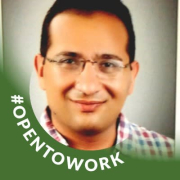

SAP Cloud Platform and Red Hat OpenShift both compete in the cloud services category, prioritizing integration, scalability, and enterprise support. While SAP Cloud Platform is commended for its robust ERP capabilities, Red Hat OpenShift is favored for its flexibility in container orchestration and security, aligning closely with developer needs.
Features: SAP Cloud Platform offers extensive ERP integration, high scalability, and comprehensive data source connectivity, particularly excelling in large enterprise customization needs. Red Hat OpenShift is notable for advanced containerization, efficient CI/CD processes, and strong security, closely integrated with Kubernetes to enhance developer control over infrastructure.
Room for Improvement:SAP Cloud Platform requires better support for legacy system integration, a more flexible pricing model, and an improved user interface. Users also desire enhanced data transformation and simpler setup procedures. Red Hat OpenShift could improve its setup complexity, lower resource demands, and offer more detailed documentation and better GUI for configuration management.
Ease of Deployment and Customer Service:SAP Cloud Platform allows on-premises and various cloud deployments, praised for elasticity yet criticized for its complex licensing. Its customer support is reliable but sometimes slow. Red Hat OpenShift provides on-premises and hybrid cloud deployments. Users note initial setup complexities but appreciate prompt and knowledgeable support, reflecting an enterprise-grade focus.
Pricing and ROI:SAP Cloud Platform is costly but presents high ROI potential for enterprises with its broad ERP capacities. Though expensive, Red Hat OpenShift is regarded for its comprehensive support and features, encouraging users to weigh these against open-source alternatives to maximize cost efficiency.
Moving to OpenShift resulted in increased system stability and reduced downtime, which contributed to operational efficiency.
With OpenShift combined with IBM Cloud App integration, I can spin an integration server in a second as compared to traditional methods, which could take days or weeks.
Top management buy-in is crucial, and conducting an ROI analysis is essential before adoption to ensure the investment aligns with value.
Red Hat's technical support is responsive and effective.
Red Hat's technical support is good, and I would rate it a nine out of ten.
I have been pretty happy in the past with getting support from Red Hat.
The availability of knowledgeable support to the implementation partners and the customers could be better.
Red Hat OpenShift scales excellently, with a rating of ten out of ten.
The platform has shown significant improvement with each new version, adding valuable features while making it easy to scale by adding or removing worker nodes and storage.
OpenShift is highly scalable, allowing us to manage thousands of pods effectively.
On a scale of one to ten, I'd rate its scalability at nine and a half to ten.
It provides better performance yet requires more resources compared to vanilla Kubernetes.
I've had my cluster running for over four years.
It performs well under load, providing the desired output.
SAP Cloud Platform is pretty stable, although there are occasional rare glitches.
Learning OpenShift requires complex infrastructure, needing vCenter integration, more advanced answers, active directory, and more expensive hardware.
Integration with tools like Grafana and Prometheus is necessary for capturing logs.
The removal of Grafana and HPA from monitoring caused some issues.
Allowing more third-party applications to be integrated into the cloud platform would make it easier for customers to adopt SAP Cloud Platform.
Initially, licensing was per CPU, with a memory cap, but the price has doubled, making it difficult to justify for clients with smaller compute needs.
Red Hat can improve on the pricing part by making it more flexible and possibly on the lower side.
The cost of OpenShift is very high, particularly with the OpenShift Plus package, which includes many products and services.
SAP is competitive compared to other enterprise solutions like Oracle, though not necessarily cheap.
The concept of containers and scaling on demand is a feature I appreciate the most about Red Hat OpenShift.
Compared to other Kubernetes solutions, OpenShift is more enterprise-oriented.
A valuable feature of Red Hat OpenShift is its ability to handle increased loads by automatically adding nodes.
It converts CapEx into OPEX due to its SaaS model.


Red Hat OpenShift offers a robust, scalable platform with strong security and automation, suitable for container orchestration, application deployment, and microservices architecture.
Designed to modernize applications by transitioning from legacy systems to cloud-native environments, Red Hat OpenShift provides powerful CI/CD integration and Kubernetes compatibility. Its security features, multi-cloud support, and source-to-image functionality enhance deployment flexibility. While the GUI offers user-friendly navigation, users benefit from its cloud-agnostic nature and efficient lifecycle management. However, improvements are needed in documentation, configuration complexity, and integration with third-party platforms. Pricing and high resource demands can also be challenging for wider adoption.
What are the key features of Red Hat OpenShift?Red Hat OpenShift is strategically implemented for diverse industries focusing on container orchestration and application modernization. Organizations leverage it for migrating applications to cloud-native environments and managing CI/CD pipelines. Its functionality facilitates efficient resource management and microservices architecture adoption, supporting enterprise-level DevOps practices. Users employ it across cloud and on-premises platforms to drive performance improvements.
SAP Cloud Platform is an integration platform as a service (iPaaS) and PaaS cloud tool. It powers applications that deliver real-time insights to contribute to more effective and timely decision-making. Customers all over the world from different-sized companies use SAP Cloud Platform to build application extensions, integrate landscapes, or extend existing enterprise applications in the cloud.
The platform incorporates innovative technologies, including big data, Internet of Things (IoT), artificial intelligence (AI), and machine learning (ML). SAP Cloud Platform supports native services and products by SAP, as well as partners with popular platforms such as Microsoft Azure, Google Cloud Platform, Amazon AWS, and Alibaba Cloud.
Users of the product can extend, integrate, and develop applications on premises and in the cloud. The product offers flexibility, agility, and scalability, as it enables easy integration and connection of different applications within the platform. The solution is based on open standards and provides a wide range of development tools.
SAP has announced that they are removing SAP Cloud Platform as a brand name and moving its capabilities within SAP Business Technology Platform (SAP BTP). The features of SAP Cloud Platform will be integrated into SAP BTP to assist with data management and analytics, alongside other components of the platform. Existing customers of SAP Cloud Platform will continue to benefit from its products under SAP Integration Suite and SAP Extension Suite.
SAP Cloud Platform Capabilities
The solution offers a wide variety of tools, application capabilities, services, and application programming interface (API). These can be categorized in the following ways:
SAP Cloud Platform Benefits
The platform has many benefits which improve their client’s workflows. They include the following:
Reviews from Real Users
Shylaraj AK, a senior architect at a construction company, describes SAP Cloud Platform as easy to maintain, great features, and helpful support, which attributes to his high rating for the product.
Ehab-El H., chief executive officer at Asis, likes SAP Cloud Platform because it is easy to use with a fast deployment and straightforward setup.
We monitor all PaaS Clouds reviews to prevent fraudulent reviews and keep review quality high. We do not post reviews by company employees or direct competitors. We validate each review for authenticity via cross-reference with LinkedIn, and personal follow-up with the reviewer when necessary.